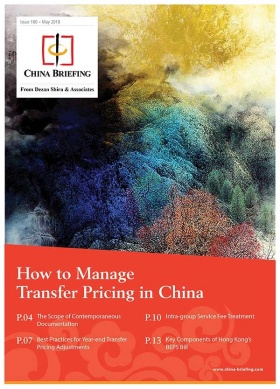China Cuts Tariffs for Five Asian Countries
By Dorcas Wong

China has adopted conventional tariff rates on a range of imported goods originating from India, South Korea, Bangladesh, Laos, and Sri Lanka, following a recent announcement from the Customs Tariff Commission of the State Council.
Beginning July 1, 2018, tariffs on a total of 8,549 goods were reduced or cut to zero.
The tariff cuts target goods such as soybeans, precision instruments, chemicals, agricultural products, clothing, and steel & aluminum products.
Some of the significant tariff cuts include:
- Soybeans: tariff of three percent reduced to zero percent
- Beef: tariffs ranging from 12-20 percent reduced to zero percent
- Liquefied petroleum gas (LPG): tariff of three percent reduced to 2.1 percent
- Textile raw materials: tariff of 10 percent reduced to 6.5 percent
- Medical x-ray devices: tariff ranging from two to four percent reduced to zero to 2.8 percent
The complete list of tariff reductions can be found here.
The tariff concessions are part of a larger commitment to improve trade relations between China and the other five Asia-Pacific member countries that are part of the Asia Pacific Trade Agreement (APTA).
The agreement, signed in 1975, is the oldest preferential trade agreement in the Asia-Pacific region and encompasses approximately three billion people.
Currently, all member countries, including China, have agreed to reduce tariffs by an average of a third on more than 10,000 items.
Critics, however, argue that the timing and target of these tariff cuts are not a coincidence. The announcement comes a mere two days after China stated it would impose an additional 25 percent tariff on soybeans, chemical products, and medical equipment imported from the US.
![]() Business Intelligence Solutions from Dezan Shira & Associates
Business Intelligence Solutions from Dezan Shira & Associates
Many observers suspect that China’s decision to give effect to tariff reductions – agreed to in negotiations held over a year ago – is less about adhering to APTA commitments, but rather an attempt to diversify import channels in response to the escalating US-China trade fallout.
While it is uncertain whether imports from these five Asian countries will fill the void left by a decreased reliance on US importers, particularly in commodities such as soybeans, the tariff cuts are nevertheless a positive step to opening-up trade opportunities for countries in the Asian-Pacific region.
Many countries holding trade deficits with China have long been lobbying to expand their market access in the country. India, for example, recently pitched for increased exports of soybeans and sugar at the recent India-China strategic dialogue in April.
In addition to these tariff cuts, previously announced tariff cuts on a range of consumer goods also went into force on July 1.
About Us
China Briefing is produced by Dezan Shira & Associates. The firm assists foreign investors throughout Asia and maintains offices in China, Hong Kong, Indonesia, Singapore, Russia, and Vietnam.. Please contact info@dezshira.com or visit our website at www.dezshira.com.
- Previous Article The Scope of Contemporaneous Documentation in China
- Next Article Investimenti Commerciali Cina-Russia con il recente EAEU FTA






